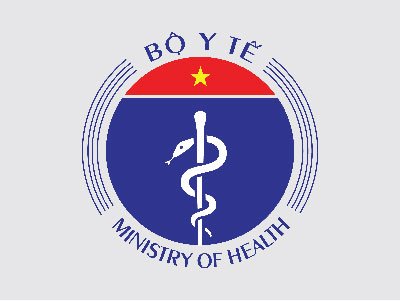Vocabulary liên quan đến Coronavirus kèm ví dụ
Trước tình hình COVID-19 vẫn còn diễn biến căng thẳng ở khắp nơi trên thế giới, thật không khó để nhận ra IELTS test rất có thể sẽ đi sâu vào chủ đề này. Hy vọng bài viết về vocabulary liên quan đến Coronavirus sẽ giúp học viên ôn luyện IELTS dễ dàng hơn.
Mỗi một từ/cụm từ sẽ bao gồm:
- Nghĩa cơ bản trong tiếng Anh và lược dịch sang tiếng Việt
- Ví dụ về cách dùng trong văn nói/ văn viết hoặc trong bài kiểu tra IELTS.
1. animal-human interface (noun): any point where animals (domestic and wild) and humans meet (mặt phân giới của người và động vật).
- Eg: Animal diseases can potentially pass to humans at any animal-human interface such as a zoo, farm or animal market.
2. asymptomatic (adjective): showing no symptoms of a particular disease (không triệu chứng).
- Eg: She had no idea her husband had coronavirus because he was asymptomatic.
3. carrier (noun): a person or animal that transmits a disease to others, whether suffering from it themselves or not (người/vật mang mầm bệnh).
- Eg: People who are asymptomatic can still be carriers.
4. carry (verb): be infected with a disease and able to transmit it to others, whether symptomatic or asymptomatic (bị nhiễm và có thể lây nhiễm).
- Eg: Some people may carry coronavirus without knowing it.
5. community spread (noun): transmission of a disease directly within a community and not by importation from a foreign source (lây lan cộng đồng).
- Eg: With this many new positive cases, the evidence suggests that we now have community spread right here in our county.
6. contact tracing (noun): identification and monitoring of people who may have had contact with an infectious person (xác định và theo dõi những người tiếp xúc gần với nguồn bệnh).
- Eg: By insisting on strict contact tracing as soon as someone was potentially infected, they managed to control the spread of the disease.
7. contagious (adjective): describing a disease that can pass from person to person, usually by direct contact; describing a person with such a disease (mô tả căn bệnh lây lan, truyền nhiễm, thường là do tiếp xúc trực tiếp)
- Eg: Patients who are still contagious are kept in isolation.
Coronavirus là một chủng virus gây bệnh lên hệ thống hô hấp và tiêu hóa cho động vật và con người. (hệ hô hấp và hệ tiêu hóa)
Coronavirus diseases can range from the relatively harmless common cold to more severe and potentially fatal diseases such as SARS (Severe Acute Respiratory Syndrome).
Coronavirus có thể chỉ là cảm lạnh thông thường tương đối vô hại đến các bệnh nghiêm trọng hơn và có khả năng gây tử vong cao như SARS (Hội chứng hô hấp cấp tính nặng).
Seen through a microscope, coronaviruses appear circular with spikes, like crown, and are named from the Latin for crown, which is corona.
Nhìn qua kính hiển vi, coronavirus xuất hiện hình tròn có gai, giống như vương miện và được đặt tên theo tiếng Latin vương miện là ‘corona’.
Corona viruses normally originate in animals and usually cannot be passed to humans.
But very occasionally a coronavirus mutates and can then be transmitted from animal to human, and then from human to human.
This is how the SARS epidemic started in the early 2000s, for example
- Eg:Did you know that flu is a coronavirus disease?
9. COVID-19 (noun): official name for the novel coronavirus disease that emerged in China in 2019 (tên chính thức của corona chủng mới xuất hiện ở TQ) COVID-19 = COronaVIrus Disease-2019
- Eg: All countries are requested to report any new confirmed case of COVID-19 within 48 hours.
10. diagnose (verb): identify an illness by examining the symptoms (chuẩn đoán, kiểm tra các triệu chứng)
- Eg: Only a medical professional can properly diagnose the cause of your problem.
11. diagnosis (noun): identification of an illness by examination of the symptoms
- Eg: If you’re not happy with the doctor’s diagnosis you could always get a second opinion.
12. disease (noun): illness; sickness; a disorder of the body (bệnh, ốm, cơ thể bất ổn)
- Eg: Polio is one of several serious diseases that have been nearly eradicated.
13. droplets (noun): the spray produced when people cough or sneeze, and which can spread diseases like COVID-19 (giọt bắn xuất hiện khi hắt hơi hoặc ho, dẫn đến lây lan COVID)
- Eg: Health care personnel wear protective clothing to guard against the disease carried in droplets when infected people sneeze or cough.
14. epidemic (noun): occurrence of a particular disease in a large number of people in a particular area. (bệnh dịch)
- Eg: The city was devastated by an epidemic of cholera in the 19th century.
15. herd immunity (noun): an indirect protection from a disease resulting from a large percentage of the population gaining immunity (either through vaccination or through recovering from the disease) -> miễn dịch bầy đàn, hay miễn dịch cộng đồng là hình thức bảo vệ gián tiếp chống bệnh truyền nhiễm diễn ra khi một tỷ lệ lớn dân cư đã trở nên miễn dịch với một loại vi khuẩn lây nhiễm, bởi đó tạo nên một lớp bảo vệ cho những người không miễn dịch
- Eg: This virus is unlike the seasonal flu because there is currently no vaccine or herd immunity, he said.
16. incubation period (noun): the time from a person’s first exposure to a disease to the time when symptoms develop (thời kỳ ủ bệnh, là khoảng thời gian kể từ khi tiếp xúc với nguồn bệnh đến khi phát tác triệu chứng)
- Eg: When they know the incubation period they will know how long to keep people in quarantine.
“Infection” và các từ liên quan (Infection = sự lây nhiễm)
17. infect (verb): affect a human or animal with a disease-causing organism
- Eg: But can it infect human beings?
18. infected (adjective/past participle): affected with a disease-causing organism
- Eg: They were able to cure the infected left lung before the infection could spread to the right lung.
19. infection (noun): process of infecting; state of being infected; infectious disease
- Eg: Breast milk can help protect babies against various infections.
20. infectious (adjective): describing a disease that can be transmitted through the environment; describing a human or animal capable of spreading an infection.
- Eg: Avoid the dogs as they may still be infectious.
Covid-19 – Các từ khác
21. isolate (verb): keep an infected person away from healthy people.(cách ly người bệnh)
- Eg: They will isolate anyone suspected of having the disease.
22. isolation (noun): separation of infected people from healthy people for serious contagious diseases like COVID-19 (cách ly – danh từ)
- Eg: Travellers arriving from the infected area were immediately put in isolation.
23. mask (noun): a piece of fibre or cloth that fits over the nose and mouth to protect other people from the wearer’s germs and/or the wearer from germs in the air (làm từ sợi hoặc vải vừa vặn mũi và miệng để bảo vệ người đeo khỏi mầm bệnh hoặc các vi khuẩn trong không khí)
- Eg: The World Health Organization recommend that people should not wear masks unless they may be carrying COVID-19 (to protect other people) or are caring for anyone suffering from COVID-19 (to protect themselves).
- Eg: Until they gave it a name, they mostly referred to COVID-19 as novel coronavirus (disease).
25. outbreak (noun): a sudden occurrence of a disease (or other unpleasant thing) (sự bùng phát của dịch bệnh hoặc sự việc không mong đợi).
- Eg: There was another outbreak of the disease in 1993 but the cause was uncertain.
26. pandemic (noun): occurrence of a particular disease throughout a whole country or the world. (đại dịch, xuất hiện trên toàn lãnh thổ đất nước hoặc thế giới)
- Eg: Just after the First World War there was a pandemic of flu which killed up to 40 million people worldwide.
27. pathogen (noun): a micro-organism or germ such as a bacterium or virus that can cause disease (mầm bệnh, là một vi sinh vật hoặc vi trùng như vi khuẩn hoặc vi rút có thể gây bệnh)
- Eg: Fortunately, most pathogens are dealt with by the body’s immune system.
28. patient zero (noun): the person identified as the first to become infected with a disease in an outbreak (người được xác định là người đầu tiên bị nhiễm bệnh trong một ổ dịch)
- Eg: Authorities usually try to determine who patient zero was in any given outbreak as can help answer important questions about how, when and why it started.
29. PCR test (noun): test that detects viral particles in blood or other body fluids. (PCR = polymerase chain reaction) (xét nghiệm phát hiện virus trong máu hoặc các chất dịch cơ thể khác. (PCR = phản ứng chuỗi polymerase)
- Eg: The PCR test is one of the tools that doctors use to diagnose certain coronavirus diseases.
30. person-to-person (adjective): describing the spread of a disease from one person to another, typically through touch including shaking hands, kissing, sexual intercourse etc. (mô tả sự lây lan mầm bệnh từ người sang người qua hành động như bắt tay, ôm hôn, quan hệ tình dục…)
- Eg: In January an infected American woman returning home from China transmitted the virus to her husband, marking the first known example of person-to-person spread of the virus in the USA.
31. quarantine (noun): isolation and monitoring of people who seem healthy but may have been exposed to an infectious disease to see if they develop symptoms. (cách ly và theo dõi người nghi nhiễm)
- Eg: For centuries it’s been common for ships arriving from infected areas to be kept in quarantine at the docks, originally for 40 days which is where the term comes from.
32. Reservoir (noun): An animal, plant or environment in which a disease can persist for long periods of time. (vật chứa mầm bệnh trong thời gian dài)
- Eg: some bats serve as a reservoir for rabies and can spread the disease by biting humans.
33. SARS-CoV-2 (noun): Severe Acute Respiratory Syndrome CoronaVirus 2; final official name for the coronavirus that causes COVID-19. (This virus was previously known as 2019-nCoV.)
- Eg: SARS-CoV-2 is the name of the virus and COVID-19 is the name of the disease.
34. screening (noun): testing of people for the presence of a disease. For COVID-19 the first step in screening is usually taking a person’s temperature (kiểm tra khả năng nhiễm bệnh, kiểm tra thân nhiệt)
- Eg: They now conduct screening for all incoming passengers.
35. self-isolate (verb): isolate oneself; put oneself in quarantine, away from other people (tự cách ly bản thân)
- Eg: The prime minister’s wife has tested positive for COVID-19 and the couple are now self-isolating and working by phone and Skype.
36. social distancing (noun): practice of encouraging people to minimize contact and closeness, whether by banning large or even small groups/meetings (football matches, nightclubs), or by maintaining a minimum distance between people (for example one metre or two metres) (giãn cách xã hội, hạn chế tụ tập nơi đông người, duy trì khoảng cách an toàn)
- Eg: The government has instructed schools to take social distancing measures to slow the spread of the virus.
37. superspreader (noun): person infected with a virus etc who transmits or spreads it to an unusually large number of people (người siêu lây nhiêm virus)
- Eg: One so-called “superspreader” in South Korea infected at least 37 people at her church with the virus.
38. symptomatic (adjective): showing symptoms of a particular disease (có triệu chứng của bệnh)
- Eg: Anyone who is symptomatic is advised to phone a doctor and get tested.
39. symptoms (noun): a physical or mental feature that indicates illness / disease.
- Eg: Typical symptoms of COVID-19 are fever, coughing, and shortness of breath.
40. test negative | test positive (verb): if you take a test for an infection and you test negative, that means you do not have the infection. If you test positive, that means you have the infection. (xét nghiệm âm tính/dương tính với bệnh)
- Eg: The President is pleased to announce that he has tested negative for the virus.
41. transmission (noun): transfer of a disease from animal to human or from human to human (lây nhiễm từ động vật sang người hoặc từ người sang người)
- Eg: Transmission of many diseases can be direct or indirect.
42. transmit (verb) – often passive: cause a disease to pass from animal to human or from human to human.
- Eg: Many diseases are transmitted through physical contact.
Treat & treatment (điều trị)
43. treat (verb): attempt to cure or alleviate an illness or injury through medical care
- Eg: Doctors cannot currently treat COVID-19 directly and instead concentrate on relieving symptoms.
44. treatment (noun): medical care given to a patient for an illness or injury
- Eg: There is currently no specific antiviral treatment for COVID-19, and infected patients receive supportive care to help relieve symptoms.
45. vaccine (noun): a substance used to protect humans and animals from a disease.
- Eg: A vaccine for cholera was invented in 1879.
Viral & Virus
- Eg: Antibiotics cannot be used to treat viral infections because they don’t kill viruses, only bacteria.
47. virus (noun): a living thing, too small to be seen without a microscope, that causes infectious disease in animals and humans
- Eg: Like all diseases caused by viruses, the common cold cannot be cured with antibiotics.
48. zoonotic (adjective): describing a disease that can be transmitted from animals to humans (căn bệnh có thể truyền từ động vật sang người)
- Eg: To protect yourself from zoonotic diseases it’s best to avoid bites and scratches from animals.
Chúc bạn học thành công!
(Nguồn: IELTS game)



























